- Administrator
- Albums and Singles
 On his first full length album since 2013's An Occasion For Death, Andy Grant (The Vomit Arsonist) has crafted a record that clearly shows his influences, but bears his own distinct mark and sound. An extremely aggressive album, it is also an exercise in restraint, resulting in a set of songs that lurch more than assault, but is jam packed with evil and violence that festers dangerously close to the surface.
On his first full length album since 2013's An Occasion For Death, Andy Grant (The Vomit Arsonist) has crafted a record that clearly shows his influences, but bears his own distinct mark and sound. An extremely aggressive album, it is also an exercise in restraint, resulting in a set of songs that lurch more than assault, but is jam packed with evil and violence that festers dangerously close to the surface.
Much of Only Red was inspired by Grant's tour last year with genre innovators Brighter Death Now, who have made an entire career of presenting extremely sinister and violent noise in a barely restrained, structured capacity.That is the influence that he most clearly employs on this album.The feeling of something horrible happening just below the superficial, held back only through weakening repression and fighting to get out.
Opener "Choice" exemplifies this approach.With an ambience that sounds like reverberations within the concrete and steel of a parking garage, he builds the sound up from a loop, adding tension and dissonance with each passage.Finally, pummeling and crunchy rhythms appear, mixed with heavily processed vocals that are extremely aggressive, yet mixed extremely low."Only Red" comes from a similar scraping, grinding space, with the slow jackhammer beats and screamed voices conveying an undeniable sense of frustration and an urgent need to be heard.
On "It Just Is," Grant employs similar techniques, but at first in a more open, spacious context.The percussive blasts and screamed vocals appear later on, and contrast the less oppressive opening extremely well."I'm Not Fine" slows the rhythms down and buries them in distortion to give the whole piece a distinct fuzzy crunch, occasionally stopping to allow what sounds like a carefully controlled passage of feedback to move to the forefront.
While the mood may not vary greatly from song to song, the structures and compositional methods do."Nothing Matters," a reworking of Hank Williams' "It Just Don't Matter Now," is a sustained roar, heavier on the chugging noise and explosive bursts of sound.With the vocals added, it is an undeniably menacing, vicious piece of music."Unwelcome Peace" has Grant instead opting for a more uncomfortable mood, allowing bits of what sounds like cello to loom amongst strange, menacing noises.
One of the strongest features of Only Red is just how well Grant is at employing the expected sounds of noise and power electronics into a different structure, one with a greater depth and complexity rather than just being pure dissonance.That, coupled with the palpable sense of frustration and anger (but not in the stereotypically destructive framework) that he generates, gives an added depth to an extremely strong record.
samples:
 
Read More
- Administrator
- Albums and Singles
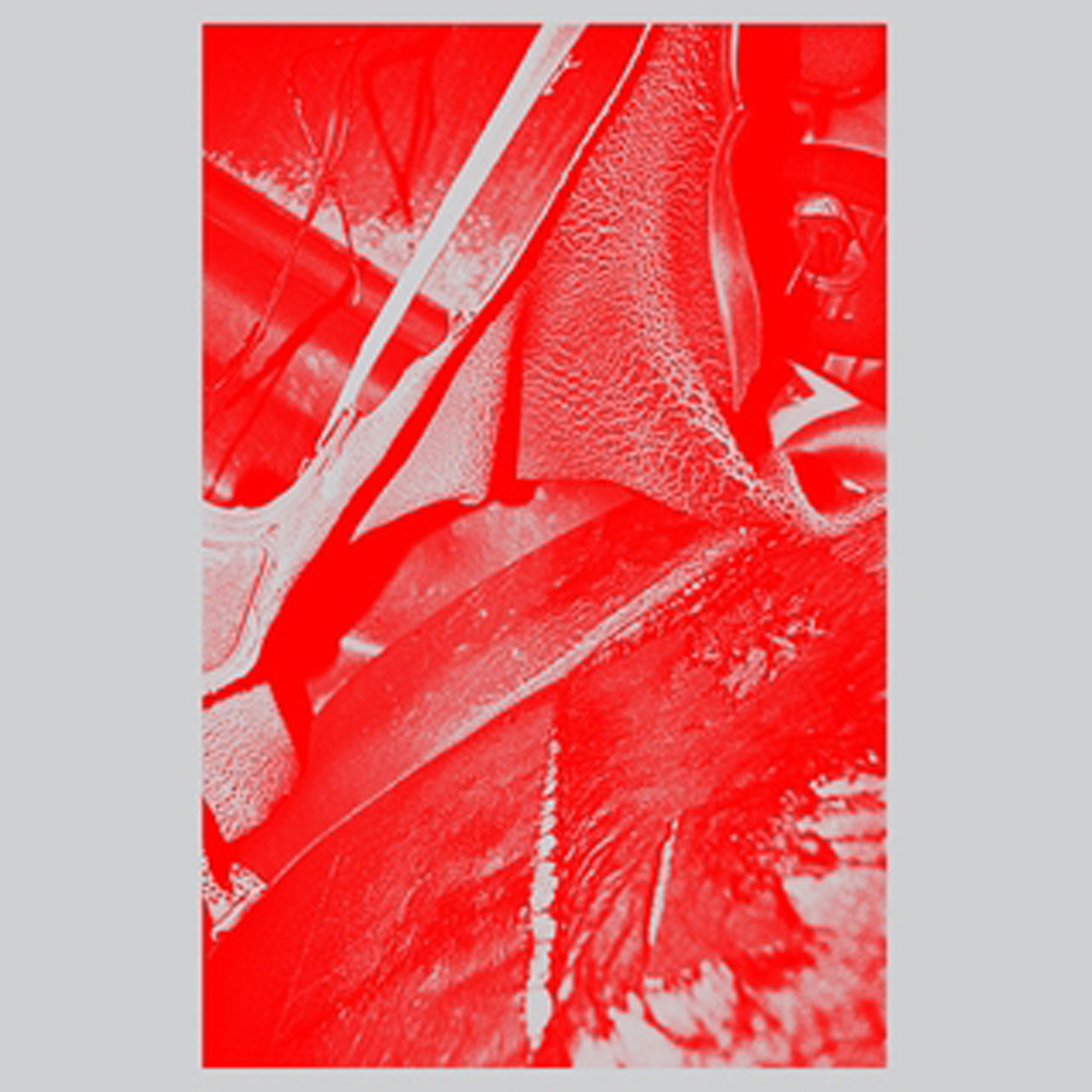 I tend to enjoy just about everything Luke Younger releases, but he has always been a bit of a tough guy to pin down stylistically, as he has recently seemed equally at home with abstract sound art, heavy noise, and his own unique strain of corroded, post-industrial exotica.  With Olympic Mess, he remains as compelling and eclectic as ever, but seems to have gotten significantly better at crafting a listenable and varied album that flows rather than overwhelms.  Also, he has a few welcome new tricks up his sleeve.  A few longtime fans might be disappointed that Mess leans more heavily upon shades of techno, drone, and ambient than dense, multilayered brutality, but I find Younger's quieter, more nuanced side to be quite an appealing one.
I tend to enjoy just about everything Luke Younger releases, but he has always been a bit of a tough guy to pin down stylistically, as he has recently seemed equally at home with abstract sound art, heavy noise, and his own unique strain of corroded, post-industrial exotica.  With Olympic Mess, he remains as compelling and eclectic as ever, but seems to have gotten significantly better at crafting a listenable and varied album that flows rather than overwhelms.  Also, he has a few welcome new tricks up his sleeve.  A few longtime fans might be disappointed that Mess leans more heavily upon shades of techno, drone, and ambient than dense, multilayered brutality, but I find Younger's quieter, more nuanced side to be quite an appealing one.
According to Younger, Olympic Mess was partially inspired by an interest in the hypnotic qualities of "loop-based industrial music, dub techno, and Balearic disco."  A former noise artist being seduced by beats is certainly not anything new, but that influence manifests itself in rather unusual and well-concealed ways throughout the album.  The "industrial" influence is not particularly hard to spot, however, as the warped and clattering introduction of "Don’t Lick The Jacket" quickly gives way to 8-minutes of heavy locked-groove throb and "abandoned factory" atmosphere ("I Exist In A Fog").  That strain is surprisingly short-lived, however: despite being one of the album's clear centerpieces, the dark and heavy "Fog" is actually a bit of an aberration.
Another minor surprise is that Olympic Mess is almost entirely beat-less, as Luke largely dispensed with dub techno’s thump and just mostly kept the shifting synthesizer pulse, giving many of these pieces a subtly disorienting, warped, and time-stretched feel.  Also, Helm still sounds like Helm, so an otherwise normal foray into dub techno like "Fluid Cloak" easily avoids feeling derivative by sounding like it is being played in a club filled with giant otherworldly crickets.  In fact, finding innovative ways to mangle techno into unrecognizability seems to be the primary theme of the album, as Younger returns to the form several more times with fresh variations.  "Sky Wax," for example, sounds slowed and drugged into hallucinatory abstraction, while the warm, skipping pulse of "The Evening In Reverse" falls apart midway, sounding simultaneously desolate and like it is being slowly chewed by something.  "Sky Wax" also boasts a straightforward groove of sorts, yet it sounds weirdly distant and hollow and is beset with strangled feedback.  Nothing is ever straight-forward with Helm.
The most compelling pieces, of course, are the ones that sound like nothing else on the album.  The most memorable is by far the alternately surreal and amusing "Strawberry Chapstick."  With no accompaniment other than a distant throb, a hushed voice shares what initially sounds like a voyeuristic window into an unsettling confession, but the speaker never actually divulges anything more frightening than a passion for bluegrass music.  The title piece also caught me off-guard, as it is both consistently melodic and rhythmic, content just to unspool a pleasingly burbling, lurching, and off-kilter theme for its entire duration.  Yet another stand-out is the album’s epic, the 12-minute "Outerzone 2015," resembling a warm drone piece that has been pushed into the background to make way for a curious fantasia of field recordings (dripping water, echoing and flanging metallic clattering, etc.).  Eventually a thumping four-on-the floor house beat emerges, but it sounds too distant and too subterranean to resemble anything normally found near a dancefloor.  Much later, it all gives way to an uncharacteristically lush oasis of dreamy drone before transforming yet again into a beautiful coda of woozy shimmer, bow scrapes, and backwards strums.
It is always difficult to ascribe any sort of evolution to Helm, as Luke’s discography has largely been a series of lateral moves rather than a linear path towards a clear vision, but Olympic Mess nevertheless boasts some significant fundamental changes to Helm’s aesthetic.  Aside from being much more melodic and playful than usual, Mess is dramatically less dense and "busy" than past Helm releases.  As far as I am concerned, those are neither welcome nor unwelcome changes (Younger actually excels at vibrant, multilayered density), but they certainly make his music more accessible and open up a lot of fertile new ground for future albums (you can only do so much with noise and texture alone).  Also, Luke has gotten much better at finishing his songs before they overstay their welcome.  If this album has a flaw, it is merely that the individual songs do not quite scale the frightening or innovative heights of Helm’s previous triumphs.  As an album, however, Olympic Mess is both extremely satisfying and marekedly different from everything that came before it, which easily secures it a place among Helm’s most essential releases.
 
Read More
- Administrator
- Albums and Singles
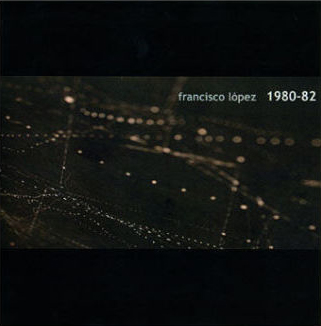 Francisco López came onto my radar beginning during his most prolific period, largely the mid-1990s to the present day. Even though his career began earlier, his 1980s period is often forgotten due to these earliest works published in extremely small numbers that have faded into obscurity. This new compilation, however, presents previously unreleased material from his earliest cassette recordings. Within the context of his expansive body of work, what is most striking is how established his aesthetic and style was, even at such a young age.
Francisco López came onto my radar beginning during his most prolific period, largely the mid-1990s to the present day. Even though his career began earlier, his 1980s period is often forgotten due to these earliest works published in extremely small numbers that have faded into obscurity. This new compilation, however, presents previously unreleased material from his earliest cassette recordings. Within the context of his expansive body of work, what is most striking is how established his aesthetic and style was, even at such a young age.
López’s approach to composition was already heavily ingrained in his work from the beginning and was largely born out of necessity.This becomes apparent within the first listen. Unable to afford conventional instruments at this time, his first works were the result of experimenting with cheap cassette recorders and players, which is the method that these untitled pieces were created with.Within these he creates complex studies of sound, working with a sparse palette of source material but utilizing and exploring them with an unparalleled depth and intensity.
The actual techniques remain ambiguous, but parts sound as if they were based upon amplifying and looping the imperfections of analog media.The first features heavy sub bass wavering, like a slightly off center tape reel, and a hum that may be fragments of a tape motor running, with the volume maximized and then reduced.Francisco continues on to incorporate what could be some white noise or static interference to produce a more expansive sound with significant amounts of variation and shifting dynamics.
López works with more textural elements on the third composition, largely the errant click or bit of grinding noise that is isolated and utilized as a recurring element rather than the passing glitch of a damaged bit of tape.This use of subtle textures and open spaces is not at all too dissimilar to his modern day work, just somewhat less pristine in presentation due to the analog, rather than digital source of sounds and his tools of manipulation.Knowing the low fidelity methods used to create these compositions is one of this album's strongest assets.
The final two, lengthy pieces are perhaps most in line with his modern work that examines sounds that barely rise above absolute silence, and neither would have been out of place on his Presque Tout (Quiet Pieces 1993-2013) collection from 2014.The fifth piece drifts from a hum resonating down a long hallway into a rumbling, subterranean churn.At times it resembles what I imagine the deepest part of the ocean would sound like, eventually shifting to such low frequencies to be almost imperceptible by human hearing.This blends in nicely to the final piece, which is also built around nearly invisible low-end noises.Here it is almost a rhythmic pulsing that becomes lower and lower in pitch until ending with practically nothingness.
Even with his means of composition limited to such rudimentary tools over 30 years ago, Francisco López began his career in sound out rather fully formed and realized.These early works may be structurally more basic than what he has become most known for, but for such a young artist with basic tools, he managed to begin the sound that he has refined with each subsequent release.Considering how much of a pioneer he has been in this genre, it is fascinating that even his most tentative works remain strong nearly three and a half decades after their creation.López's work has always resonated with me because it requires such focused and dedicated attention, keeping me engaged in everything I have heard from him.Knowing the conditions under which this material was recorded gave me an additional layer of appreciation, and also a greater curiosity as to how he created it.For that reason alone 1980-82 stands out amidst the best of his most recent work.
samples:
 
Read More
- Administrator
- Albums and Singles
First ever VHF release by the 21-years-running Ashtray Navigations, bringing one more core piece of the UK freakout underground back to the mothership. With a discography that boggles even the most ardent Discogs user and an on-point WTF graphic sensibility, Ash Nav fits perfectly into the extremely fertile and prolific scene that has produced titans like Vibracathedral Orchestra and Sunroof!. On this generous 100 minute package, Phil Todd and Melanie O'Dubshlaine essay a kind of guitar and electronics exotica, with burbling rhythms, Heldon-like laser guitar leads, field recordings, synth racket, etc – the totally fun take on Les Baxter’s all-time classic "Quiet Village" (here wittily retitled “Quite Village”) is a good example of the explorer spirit at work here. Considering the amount of unhinged psychedelic fuzzwah lead damage laid out across this thing, it’s arguably the most effusive guitar heroics record of the genre, hopefully inspiring a new generation of young rockers out there to get on the bus.
More information can be found here.
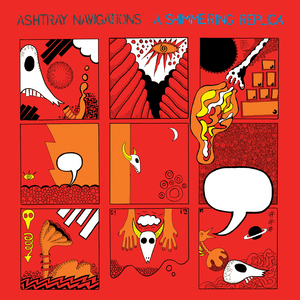
Read More
- Administrator
- Albums and Singles
Return of the mighty "classic" lineup of the VCO with their first new music in many years. Here the quintet of Michael Flower, Neil Campbell, Bridget Hayden, Adam Davenport, and Julian Bradley (joined by raconteur John Godbert) feature in a set of upbeat tracks that put the group's radical instrumental strategies into a package of full-on rock action.
More information can eventually be found here.
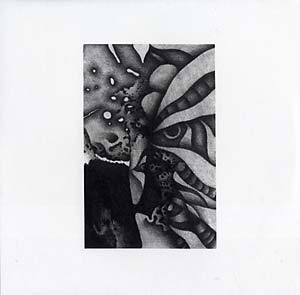
Read More
- Administrator
- Albums and Singles
ARTIST ERIK GRISWOLD
TITLE PAIN AVOIDANCE MACHINE
LABEL ROOM40
CAT # RM468
FORMAT CD/DIGITAL
RELEASE 14 AUG 2015
SOUNDCLOUD
VIDEO
STORE LINK
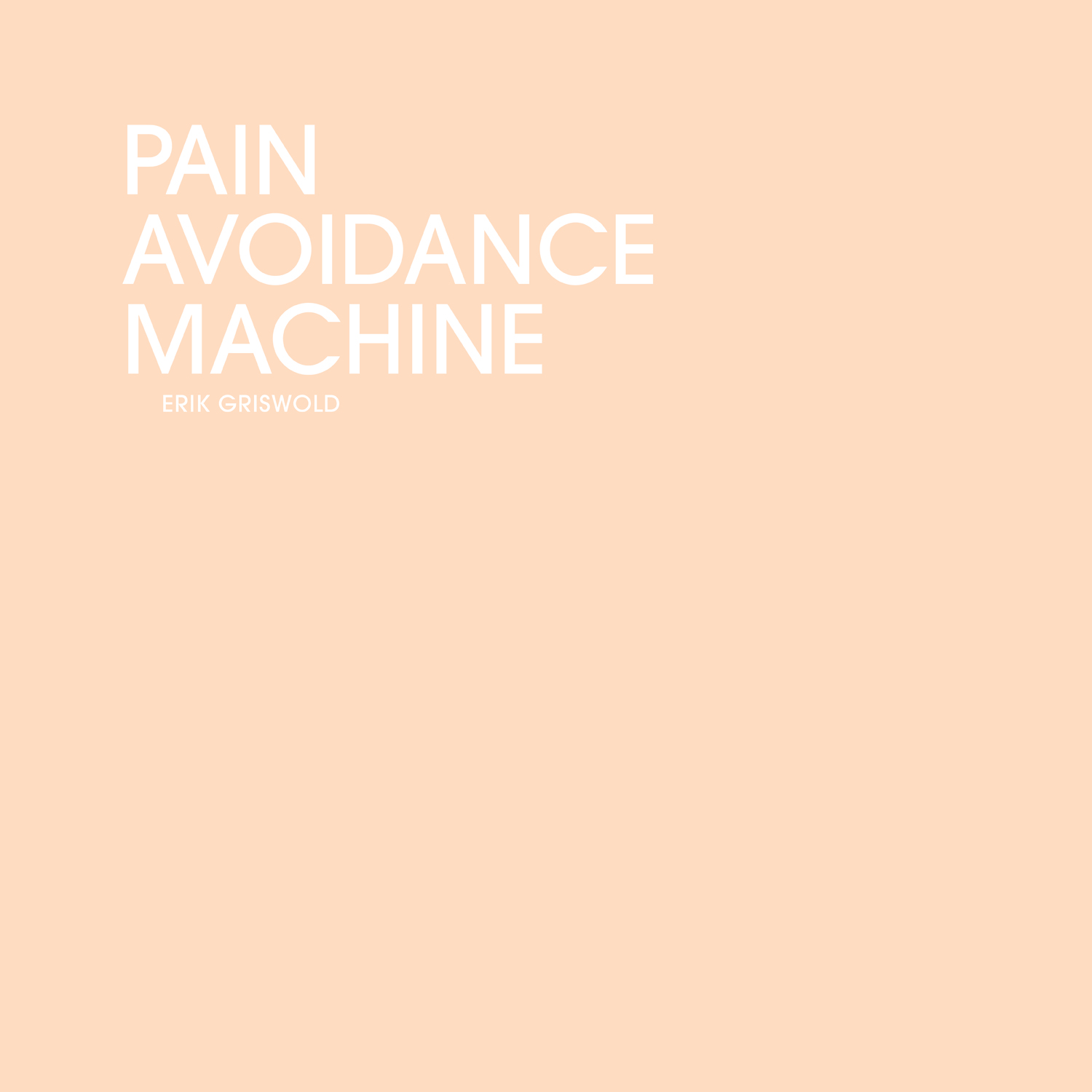
Erik Griswold - Pale Yellow Frontier from ROOM40 on Vimeo.
“In late 2014, feeling stifled by the negativity of the Australian political discourse, the narcissistic excess of social media, and facing a long summer of migraine-inducing heat, I turned to the prepared piano as a refuge.
I was coming out of an intense two-year period of composing for every conceivable instrumental combination, and not sure where to go next. I felt the need to get back to basics, and create something essential, elemental. These pieces are meditations, each with its own mood, but constructed in a similar way. The piano is the pain avoidance machine.” - Erik Griswold
Erik Griswold, the American born, Australian based composer is a master of the pre- pared piano. Over the past two decades he has forged a deeply personal approach to transforming the piano from a tonal hammered instrument into a device that transgresses acoustic music traditions. Uniting robotic rhythms of almost electronic timbre, uncharacteristic evocative melody and metallic murmurs, he transforms the piano with a restless and rigorous curiosity.
Pain Avoidance Machine, his first solo for Room40 in half a decade is an intimate set of miniatures. You are invited inside the piano, exposed to the instruments raw materiality. Griswold offers an invitation to explore the prepared piano’s sound world in detail that reveals an entirely new dimension. Mechanistic motifs and rhythms are layered one atop another to create fragile musical collages.
Like a broken pianola, the subtle nuances of the prepared piano have an off-kilter quality, full of unexpected resonances, buzzes, and percussive strikes.
Read More
- Administrator
- Albums and Singles
 Functioning excellently as a conceptual split release between a legendary band (Controlled Bleeding) and a younger project (Sparkle in Grey) that pull from similarly idiosyncratic backgrounds, the two halves of this record differ greatly, but blend thematically. Both present genre defying, stylistically diverse and unconventional instrumental music that are another notch in their impressive discographies.
Functioning excellently as a conceptual split release between a legendary band (Controlled Bleeding) and a younger project (Sparkle in Grey) that pull from similarly idiosyncratic backgrounds, the two halves of this record differ greatly, but blend thematically. Both present genre defying, stylistically diverse and unconventional instrumental music that are another notch in their impressive discographies.
Controlled Bleeding's half of this album, "The Perks of Being a Perv" is a six song suite that pulls from all the different eras of Paul Lemos' long standing band.The brief bookending pieces capture the bizarre jazz-tinged era of the project."Intro" is an amalgam of jazzy percussion and strings, along with scat vocals from the late Joe Papa, while "Birdcanned Pt. 2" is a more blistering, erratic outburst that calls to mind Naked City's "hardcore miniatures".Between these two are slew of pieces that touch most largely on the band’s instrumental rock sound, while even giving a throw back to their harsh noise moments.A song like "Garage Dub" has an almost surf rock mood to it, with a rapid tempo and some frequent and dramatic lead guitar moments that never drift too far into the world of self-indulgence, but get as close as they can without becoming a bad thing.
Both "Springtime in Brooklyn" and "Birdcanned Pt. 1" emphasize a bit more synth in addition to Lemos' guitar, and at times the electronic element becomes a deranged take on new age instrumental music.The instrumental components are similar, but Lemos and crew assemble them in unexpected and bizarre ways that are very effective.The lengthy centerpiece "Perks, Pt. 1" is where the band's noise days come back in force.Harsh and raw noise defines the lengthy piece, but paired with a distinct rhythm and what sounds like guitar shredding that is completely obliterated by distortion and effects.Towards its closing moments the piece falls apart into delicious chaos, but the compositional build and subsequent deconstruction is where the band’s brilliance shines through.
Sparkle in Grey's "The Rant of the Idiot Savant" is a single lengthy piece split into four distinct movements.The Italian quartet takes a page from Controlled Bleeding's history of mutating and recontextualizing conventional music into completely peculiar forms.The first two segments are heavily built around Franz Krostopovic's plinking piano and subtle electronics from Matteo Uggeri and Luca Sigurta, and later strings and Alberto Carozzi’s guitar.Until mid-way through the second section, the piece is rather calm and mellow.That is until a bizarre percussion passage cuts through and brings a narrative, film-score like drive to the piece.
The second two segments begin a transition into dissonance.On part three, the electronic elements become more and more pronounced, as well as chaotic, and reach a climax before withdrawing, paired excellently with the pensive piano to result in a distinct contract.The final section adds in a massive synthetic beat, pounding along with the piano accents and plucked strings to mix the peaceful and the boisterous.Each project also supplies a single, shorter form piece to act as an epilogue for this album.Sparkle in Grey's "Mevlano Pt. 1" is a piece of sweeping electronics that evolves into a hallucinogenic experience, while CB's "Live in Brooklyn, 2012" is a similar bit of mellow ambience and long, dramatic guitar solos.Neither piece is as strong as their respective longer form performances, but make for a pleasant enough conclusion.
Controlled Bleeding and Sparkle in Grey are two distinct bands that do not necessarily sound like one another, but they share a similarly gleeful sense of experimentation.Both halves are engaging, well conceived works of music featuring artists who are extremely adept at their instruments, but choose to create extremely strange and confrontational music.Fans of Controlled Bleeding’s expansive career will find much to love here, both from that band and the less familiar Sparkle in Grey.
samples:
 
Read More
- Administrator
- Albums and Singles
Chris Carter, Cosey Fanni Tutti (Chris & Cosey / Throbbing Gristle) and Nik Colk Void (Factory Floor) expand and explore onward from their critically acclaimed 2012 debut collaborative album Transverse. Featuring their distinctive metallic guitar sound, resounding bass lines, electro industrial rhythms and heavily processed vocals this album is not for the fainthearted.
Out 9/11/2015.
More information can be found here. And here is a brief teaser video.

Read More
- Administrator
- Albums and Singles
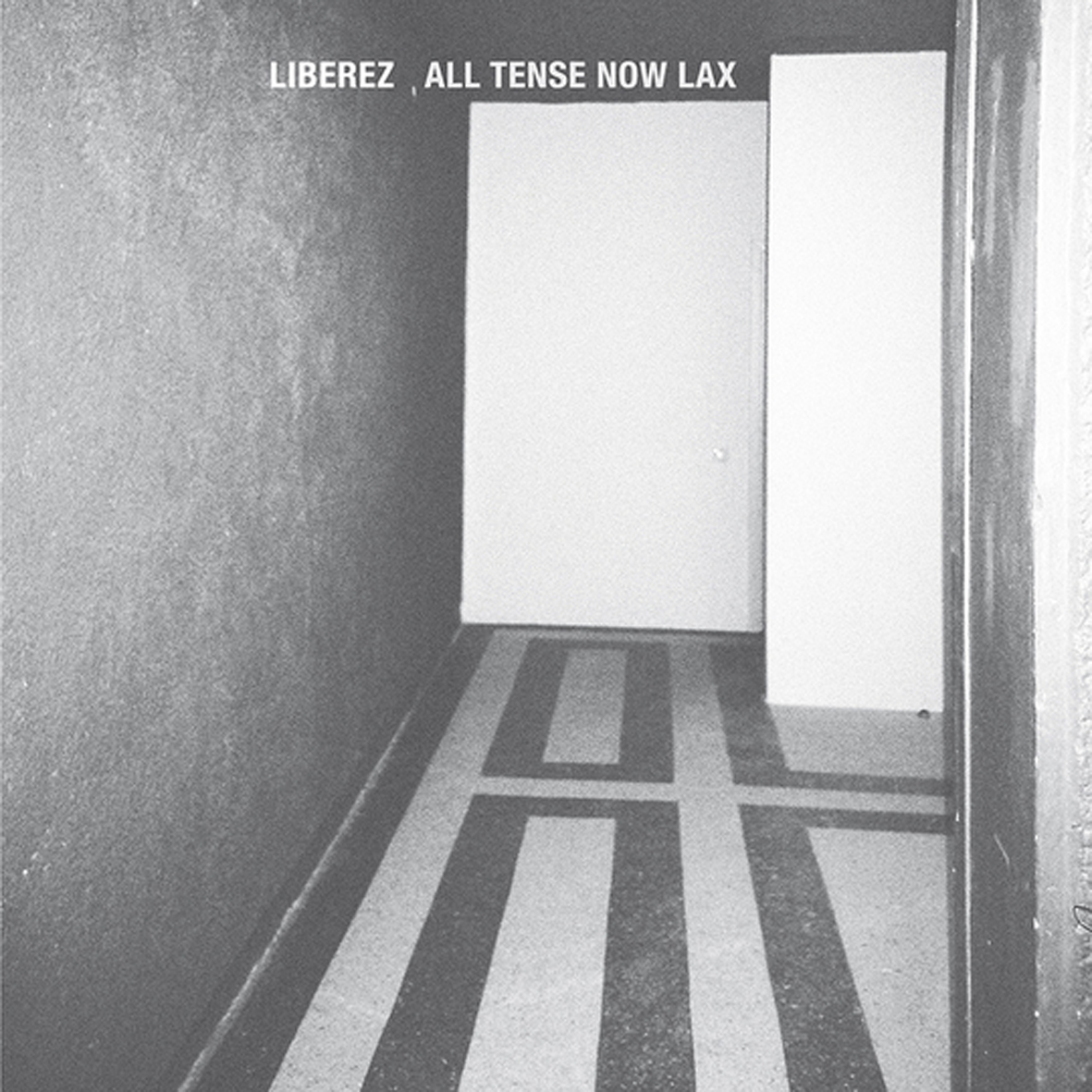 John Hannon is truly a man after my own heart, as his Liberez project recaptures an urgency, adventurousness, mystery, and revolutionary spirit that has been largely missing from underground music for a very long time.  In some respects, All Tense Now Lax picks up right where 2013's stellar Sane Men Surround left off, bringing back both vocalist Nina Bosnic and an unholy mélange of bludgeoning junkyard percussion and Greek/Eastern European violins.  In other ways, however, All Tense is quite different, largely abandoning any quietier moments of ethnographic forgery in favor of a heavier, pricklier, more anarchic, and more collage-damaged assault.
John Hannon is truly a man after my own heart, as his Liberez project recaptures an urgency, adventurousness, mystery, and revolutionary spirit that has been largely missing from underground music for a very long time.  In some respects, All Tense Now Lax picks up right where 2013's stellar Sane Men Surround left off, bringing back both vocalist Nina Bosnic and an unholy mélange of bludgeoning junkyard percussion and Greek/Eastern European violins.  In other ways, however, All Tense is quite different, largely abandoning any quietier moments of ethnographic forgery in favor of a heavier, pricklier, more anarchic, and more collage-damaged assault.
The beauty of Liberez is that it is studio project devoted to one man’s distinct vision and that that man (Hannon) has the time, patience, gear, and ability to bring it to full fruition.  As a result, Hannon and his small group of collaborators sound like an impossibly good band sometimes, throwing together juxtapositions, unusual ideas, and unexpected variables in a way that no ordinary band could.  Well, maybe they could, but it would likely not sound nearly as explosive, visceral, and off-the-rails as Liberez. One piece that highlights those traits beautifully is "Grateful Family," as Pete Wilkins' half-tribal/half-industrial metallic percussion and Bosnic’s phlegmatic spoken-word vocals are blasted by strangled, gnarled, distorted violins and plunging bass, somehow escalating to a violent cacophony without losing any of the quieter bits.  The following "419 Chop Your $" takes things even further, spicing the broth with locked-groove female vocals; distorted and inhuman male vocals; electronic crackles and disruptions; and what seems like an entire Greek traditional music ensemble.
Remarkably, that same trio are also responsible for the title piece, which marries a melancholy piano theme to something that sounds like a singing bowl or glass armonica.  Those unlikely instruments are further augmented by some smoky, dub-damaged horns later in the piece, but the real beauty of "All Tense Now Lax" lies in how discreetly warped and soft-focus it all is: the percussion and piano remain clear throughout, yet a host of indistinct field recordings and sundry other sounds flutter around the periphery.  Also, Bosnic’s half-heard vocals seem to emerge from unexpected places at unexpected times, overlapping and oddly panning while never quite being fully intelligible.  The overall effect is masterfully hallucinatory without ever being conspicuously so–it somehow just feels organically smeared and woozy.  That is a hugely difficult illusion to pull off.
That said, the single most striking aspect of the All Tense Now Lax is simply how skillfully it harnesses controlled chaos into a bulldozing display of power and how Hannon's production talents enable just a few people to sound downright apocalyptic.  Nowhere is that more apparent than on the pummeling "Grease The Axles," which somehow sounds like Crash Worship jamming with an extremely angry incarnation of The Mekons: a speaker-shredding firestorm of brutally pounding drums and furiously sawing violins.  "How Much For Your Brother?" is similarly bludgeoning, resembling a folk dance crashed by early Einstürzende Neubauten and a very insistent elephant wielding a megaphone and a distortion pedal. I do not think that I can reasonably ask for more than that.
If All Tense Now Lax can be said to have a fault, it is solely that Hannon does not seem terribly concerned with writing hooks or actual songs.  Or maybe he is, but is even more concerned with destroying them: when melodies appear, they are quickly ravaged; when vocals appear, I always feel like I am half-asleep and just catching mysterious snatches of dialogue from the other side of a wall.  I am perfectly fine with that though, as Hannon absolutely excels at mood, texture, power, and artfully nuanced mindfuckery.  Also, Liberez truly sounds like no one else. I may not remember individual songs after the album has stopped playing, but that does not make it any less of a bracing and compellingly innovative listening experience when it is playing.
Read More
- Administrator
- Albums and Singles

Pinkcourtesyphone sends you a Sentimental Something from the depths of its obsessed heart. A sonic love note of smudged ink. Joined by the otherwordly Evelina Domnitch, friend and former cover model/vocalist on Description of Problem LP. On the central core "Tears of Modernism" Miss Domnitch wields her dark magic on Theremin, weaving a mournful kiss on the envelope from beyond.
PINKCOURTESYPHONE BIO:
Pinkcourtesyphone is a continuing project by Los Angeles-based sound artist Richard Chartier (b.1971).
He is considered one of the key figures in the current of reductionist sound art which has been termed both "microsound" and Neo-Modernist. Chartier's minimalist digital work explores the inter-relationships between the spatial nature of sound, silence, focus, perception and the act of listening itself.
Pinkcourtesyphone is a more emotional, dare one say musical side of his work. Pinkcourtesyphone is dark but not arch, with a slight hint of humor. Pinkcourtesyphone is amorphous, changing, and slipping in and out of consciousness. Pinkcourtesyphone operates like a syrup-y dream and strives to be both elegant and detached.
Pinkcourtesyphone's recent critically acclaimed work Description of Problem (LINE, US) features guests/collaborators: Cosey Fanni Tutti, Kid Congo Powers, AGF, William Basinski, and Evelina Domnitch.
Chartier's sound works/installations have been presented in galleries and museums internationally and he has performed his work live across Europe, Japan, Australia, and North America at digital art/electronic music festivals and exhibits. In 2000 he formed the recording label LINE and has since curated its continuing documentation of compositional and installation work by international sound artists/composers exploring the aesthetics of contemporary and digital minimalism.
More information can be found here.
Read More
- Administrator
- Albums and Singles

Divertissement is the third collaborative full length from minimalist composer William Basinski and sound artist Richard Chartier.
The duo utilize electronics, piano, tape-loops and short wave radio to evoke a dense atmosphere suggesting hundreds of years of history rising up from the depths of a reverberating cathedral. Subtle, buried and intense murmurs of melody morph through this deeply consuming and slowly evolving composition in two parts.
Pressed in an edition of 500 with beautiful cover drawings by artist James Elaine.
More information can be found here.
Read More

